Sabry El-khodary
Professor of Internal Medicine and Vice dean for postgraduate studies and research affairs, Faculty of Veterinary Medicine, Mansoura University, Mansoura, 35516, Egypt
The issue of mycotoxin contamination in food and feed is a pressing concern throughout the Middle East and North Africa (MENA) region, with significant implications for public health, food safety, and agricultural productivity (Ben Hassouna et al., 2022).
The literature on this topic reveals a complex interplay of factors influencing:
- ⇰ The occurrence of mycotoxins
- ⇰ The effectiveness of management strategies across diverse contexts
 Globally, approximately 25 % of the annual harvest is affected by mycotoxins, resulting in substantial economic losses, particularly in developing regions (Alshannaq y Yu, 2017).
Globally, approximately 25 % of the annual harvest is affected by mycotoxins, resulting in substantial economic losses, particularly in developing regions (Alshannaq y Yu, 2017).

Health and economic implications of MYCOTOXIN CONTAMINATION
The serious implications of mycotoxins— particularly aflatoxins—for health and trade in Africa have been highlighted, emphasizing the need for comprehensive management strategies from field to fork (Ortiz et al., 2008).
 Moreover, the health consequences of mycotoxin exposure have been explored in the African context, where climatic conditions and agricultural practices contribute to widespread contamination (Omotayo et al., 2019).
Moreover, the health consequences of mycotoxin exposure have been explored in the African context, where climatic conditions and agricultural practices contribute to widespread contamination (Omotayo et al., 2019).

 The dairy industry is also notably affected by mycotoxin contamination, as detailed by Kemboi et al. (2021), who emphasize the risks posed to both animal health and human consumers through contaminated dairy products.
The dairy industry is also notably affected by mycotoxin contamination, as detailed by Kemboi et al. (2021), who emphasize the risks posed to both animal health and human consumers through contaminated dairy products.
Environmental conditions and prevalent mycotoxins in NORTH AFRICA
Mediterranean countries such as Algeria, Egypt, Libya, Morocco, and Tunisia are characterized by high temperatures and high relative humidity, particularly in coastal regions, which provide favorable conditions for fungal growth and toxinogenesis (Aloui et al., 2023).
In North African countries, various studies have reported the presence of mycotoxins in raw milk and cereals.
⇰ Aflatoxins (AFs), aflatoxin M1 (AFM1), ochratoxin A (OTA), fumonisin B1 (FB1), and zearalenone (ZEN) are the most frequently detected, partly due to climate change in the region (Jalilzadeh-Amin et al., 2023).
The significant health risks posed by mycotoxins—particularly aflatoxins, which are linked to severe outcomes such as liver cancer and acute toxicosis—have been well documented (Omotayo et al., 2019).
A meta-analysis on the prevalence of mycotoxins in dairy products in Middle Eastern countries revealed 193 studies encompassing 297,530 dairy product samples.
 The results showed that AFM1 contaminated 87 % of the samples.
The results showed that AFM1 contaminated 87 % of the samples.
 Iran reported the highest contamination levels, whereas the UAE had the lowest.
Iran reported the highest contamination levels, whereas the UAE had the lowest. The prevalence rates of AFM1 in dairy products were: milk (87 %), yogurt (68.9 %), cheese (63.6 %), kashk (62.9 %), doogh (55.6 %), and ice cream (54 %).
The prevalence rates of AFM1 in dairy products were: milk (87 %), yogurt (68.9 %), cheese (63.6 %), kashk (62.9 %), doogh (55.6 %), and ice cream (54 %). Regarding milk types, the prevalence of AFM1 was 99.5 % in pasteurized milk, 91.3 % in ultra-high-temperature (UHT) milk, 73 % in raw milk, and 51 % in traditional milk.
Regarding milk types, the prevalence of AFM1 was 99.5 % in pasteurized milk, 91.3 % in ultra-high-temperature (UHT) milk, 73 % in raw milk, and 51 % in traditional milk.
(Arghavan et al., 2025)

Country-specific findings in the MENA REGION
EGYPT – Aflatoxins in cereals, juices, and animal products
In Egypt, the literature on mycotoxins presents a critical examination of their prevalence and the associated public health risks, particularly in the context of food safety.
 Over the past decade, extensive work has been conducted on mycotoxins and their risk factors in cereal grains (El-Tahan et al., 2000; Gab-Allah et al., 2023).
Over the past decade, extensive work has been conducted on mycotoxins and their risk factors in cereal grains (El-Tahan et al., 2000; Gab-Allah et al., 2023).
One investigation highlighted the alarming presence of aflatoxins in sugarcane and its juice, emphasizing the need for further research to assess mycotoxin exposure across various Egyptian cities (Abdallah et al., 2016).
This foundational work sets the stage for understanding the broader implications of mycotoxin contamination in the Egyptian food supply.
![]() Subsequent contributions (El-Dawy et al., 2024; Gherbawy et al., 2021) a comprehensive overview of mycotoxin contamination in grains, which are affected annually to a significant extent.
Subsequent contributions (El-Dawy et al., 2024; Gherbawy et al., 2021) a comprehensive overview of mycotoxin contamination in grains, which are affected annually to a significant extent.
These statistics underscore the considerable agricultural losses and health risks posed by mycotoxins, particularly in developing nations like Egypt, where food processing challenges exacerbate the problem.
The focus on the carry-over effects of mycotoxins into animal-derived products further links contamination to broader food safety concerns.
![]() Other findings have addressed the contamination of beef and processed meat products, revealing serious health threats from aflatoxins and ochratoxins (Abd-Elghany y Sallam, 2015; Algammal et al., 2021).
Other findings have addressed the contamination of beef and processed meat products, revealing serious health threats from aflatoxins and ochratoxins (Abd-Elghany y Sallam, 2015; Algammal et al., 2021).
This research emphasizes the importance of stringent food safety protocols in Egypt, as improper handling and storage practices significantly contribute to the prevalence of mycotoxins in meat products.
 Dairy products have received extensive attention regarding the presence of mycotoxins.
Dairy products have received extensive attention regarding the presence of mycotoxins.
![]() A comprehensive meta-analysis on the prevalence of aflatoxin M1 in dairy products in selected Middle Eastern countries indicated that most dairy products are contaminated with mycotoxins (Arghavan et al., 2025).
A comprehensive meta-analysis on the prevalence of aflatoxin M1 in dairy products in selected Middle Eastern countries indicated that most dairy products are contaminated with mycotoxins (Arghavan et al., 2025).
![]() Due to their economic and public health importance, several studies have explored new approaches for the control of mycotoxins (Alghuthaymi et al., 2021; Basiouni et al., 2023; Elwan et al., 2021; Hassan et al., 2023; Imbabi et al., 2024).
Due to their economic and public health importance, several studies have explored new approaches for the control of mycotoxins (Alghuthaymi et al., 2021; Basiouni et al., 2023; Elwan et al., 2021; Hassan et al., 2023; Imbabi et al., 2024).

MOROCCO – High incidence in couscous, medicinal plants, and nuts
![]() In Morocco, research conducted by Zinedine et al. (2017) found that 98 % of couscous samples were contaminated with at least one mycotoxin.
In Morocco, research conducted by Zinedine et al. (2017) found that 98 % of couscous samples were contaminated with at least one mycotoxin.
⇰ Enniatin B (ENNB), enniatin B1 (ENNB1), enniatin A1 (ENNA1), and zearalenone (ZEN) showed the highest incidence rates among the contaminated samples.
![]() Mycotoxins have also been detected in aromatic and medicinal plants (El Jai et al., 2021).
Mycotoxins have also been detected in aromatic and medicinal plants (El Jai et al., 2021).
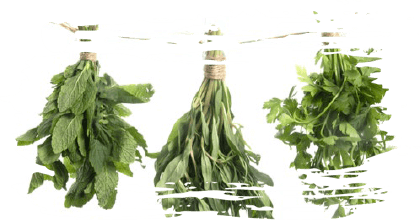
![]() Moreover, their presence has been confirmed in the breast milk of Moroccan mothers, supporting the hypothesis of widespread contamination of food and medicinal plants (Cherkani-Hassani et al., 2020).
Moreover, their presence has been confirmed in the breast milk of Moroccan mothers, supporting the hypothesis of widespread contamination of food and medicinal plants (Cherkani-Hassani et al., 2020).
A recent study (Mannani et al., 2023) reported that:
![]() 13.8 % of samples were contaminated with aflatoxins (AF), with incidence rates of 23.3 %, 23.3 %, 20 %, 13.8 %, and 3.3 % in raisins, figs, nuts, peanuts, and pistachios, respectively.
13.8 % of samples were contaminated with aflatoxins (AF), with incidence rates of 23.3 %, 23.3 %, 20 %, 13.8 %, and 3.3 % in raisins, figs, nuts, peanuts, and pistachios, respectively.
![]() Ochratoxin A (OTA) was detected in 17.1 % of samples, with incidences of 3.3 %, 3.3 %, 30 %, 30 %, and 53.3 % in walnuts, pistachios, peanuts, raisins, and figs, respectively.
Ochratoxin A (OTA) was detected in 17.1 % of samples, with incidences of 3.3 %, 3.3 %, 30 %, 30 %, and 53.3 % in walnuts, pistachios, peanuts, raisins, and figs, respectively.
The co-occurrence of OTA and AF was observed in 4.7 % of all samples.
ALGERIA – Mycotoxin co-occurrence and regional variability
![]() In Algeria Belasli et al. (2023) highlighted the incidence of mycotoxins in food products, pointing to challenges related to the lack of regulatory frameworks and insufficient research on exposure levels.
In Algeria Belasli et al. (2023) highlighted the incidence of mycotoxins in food products, pointing to challenges related to the lack of regulatory frameworks and insufficient research on exposure levels.
![]() Ben Hassouna et al. (2022) reported that aflatoxins (AFs), aflatoxin M1 (AFM1), ochratoxin A (OTA), fumonisin B1 (FB1), and zearalenone (ZEN) are the most frequently detected mycotoxins in MENA countries, primarily due to climate change in the region.
Ben Hassouna et al. (2022) reported that aflatoxins (AFs), aflatoxin M1 (AFM1), ochratoxin A (OTA), fumonisin B1 (FB1), and zearalenone (ZEN) are the most frequently detected mycotoxins in MENA countries, primarily due to climate change in the region.
![]() Aloui et al. (2023) found aflatoxins in 26.2 % of nut samples, 38.7 % of dried fruit samples (including dried figs, dates, and bradj pastries), and 47.9 % of cereal-based products, with mean concentrations ranging from 0.03 to 0.49 μg/kg. OTA was present in 16.9 % of cereal-based samples, with an average concentration of 0.15 μg/kg, but it was not detected in nuts or dried fruits. The incidence of deoxynivalenol (DON) in cereal-based products averaged 85.9 %, with mean concentrations ranging from 90 to 123 μg/kg.
Aloui et al. (2023) found aflatoxins in 26.2 % of nut samples, 38.7 % of dried fruit samples (including dried figs, dates, and bradj pastries), and 47.9 % of cereal-based products, with mean concentrations ranging from 0.03 to 0.49 μg/kg. OTA was present in 16.9 % of cereal-based samples, with an average concentration of 0.15 μg/kg, but it was not detected in nuts or dried fruits. The incidence of deoxynivalenol (DON) in cereal-based products averaged 85.9 %, with mean concentrations ranging from 90 to 123 μg/kg.
![]() More recently, Khouni et al. (2025) reported that mycotoxin contamination increased from 37.6 % in the 2020 harvest to 55.2 % in 2021.
More recently, Khouni et al. (2025) reported that mycotoxin contamination increased from 37.6 % in the 2020 harvest to 55.2 % in 2021.
They noted that the most frequently observed mycotoxin co-occurrence involved enniatin A1, enniatin B, and enniatin B1 (ranging from 0.5 to 126 μg/kg), along with DON (1307 μg/kg).
Aflatoxin B1 (AFB1), at concentrations between 0.4 and 2.6 μg/kg, was detected in only one sample collected from the continental region.

TUNESIA – Contamination in wheat and aromatic herbs
![]() In Tunisia, the examination of aromatic herbs revealed the presence of several mycotoxins, including AFB2, AFG1, AFG2, T-2, and HT-2 (Potori et al., 2020).
In Tunisia, the examination of aromatic herbs revealed the presence of several mycotoxins, including AFB2, AFG1, AFG2, T-2, and HT-2 (Potori et al., 2020).
![]() Aloui et al. (2023) reported the detection of 22 mycotoxins in 136 samples of durum wheat collected during the 2020 and 2021 harvests.
Aloui et al. (2023) reported the detection of 22 mycotoxins in 136 samples of durum wheat collected during the 2020 and 2021 harvests.
Aflatoxin B1 (AFB1) and/or enniatins were predominant. Specifically, enniatin A1, enniatin B, and enniatin B1 were detected in wheat samples collected directly from the field.
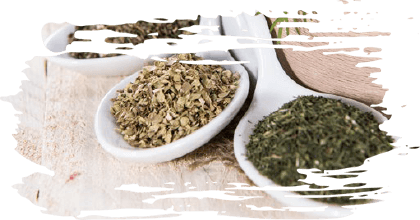
SUB-SAHARAN AFRICA: Feed contamination and food chain risks
Kemboi et al. (2020) focus on the dairy industry in Sub-Saharan Africa, detailing how mycotoxins in animal feed not only threaten animal health but also pose risks to human consumers through contaminated dairy products.
⇰ Their research underscores the need for stringent monitoring and control measures in feed production to protect both animal and human health, particularly considering the high prevalence of aflatoxins in dairy feeds.
Imade et al. (2021) contributed to this discourse by addressing the specific context of Nigeria, advocating for increased awareness and the implementation of legislative measures to address mycotoxin contamination in food and feed.
⇰ This concern is echoed by Nji et al. (2022), who identify various factors contributing to elevated mycotoxin levels in African foods, including climate change and regulatory inadequacies.
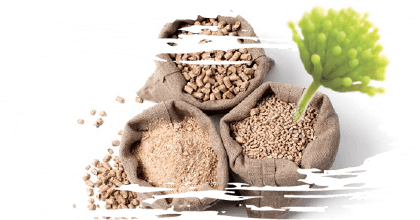
Mycotoxin control strategies in the MENA REGION
The control of mycotoxins in the Middle East and North Africa (MENA) region presents a significant public health challenge, as evidenced by a growing body of literature.
Faour-Klingbeil et al. (2019) provided a critical analysis of the national prevention and control systems in place across MENA states, assessing their compliance with the FAO/WHO National Food Control System guidelines.
![]() Notably, the authors highlighted the progress made by nations such as Oman, the UAE, Saudi Arabia, and Kuwait in enhancing their national food control systems.
Notably, the authors highlighted the progress made by nations such as Oman, the UAE, Saudi Arabia, and Kuwait in enhancing their national food control systems.
However, in Iran, mycotoxin contamination in food remains a significant concern (Aghebatbinyeganeh y Abdallah, 2024).

Innovative approaches to MYCOTOXIN MITIGATION
Regarding mitigation strategies, although traditional anti-mycotoxin agents are still used in MENA countries, various new approaches for mycotoxin control have been explored.
They include:
 A focus on prevention rather than remediation.
A focus on prevention rather than remediation. The application of good agricultural practices.
The application of good agricultural practices. The development of innovative detoxification technologies.
The development of innovative detoxification technologies.
(Abou Dib et al., 2022)
 Ndiaye et al. (2022) emphasized biological control methods as sustainable solutions for detoxification, reinforcing the need for continued research into effective strategies that also consider public health implications.
Ndiaye et al. (2022) emphasized biological control methods as sustainable solutions for detoxification, reinforcing the need for continued research into effective strategies that also consider public health implications. The use of nanosilica and bentonite as mycotoxin adsorbents in broiler chickens has also been studied, with nanosilica at 0.20 % proving to be the most effective (Ghazalah et al., 2021).
The use of nanosilica and bentonite as mycotoxin adsorbents in broiler chickens has also been studied, with nanosilica at 0.20 % proving to be the most effective (Ghazalah et al., 2021). In addition, other biological strategies for crop protection and mycotoxin mitigation have been tested (Hamad et al., 2022; Sehim et al., 2023).
In addition, other biological strategies for crop protection and mycotoxin mitigation have been tested (Hamad et al., 2022; Sehim et al., 2023).
CONCLUSION: towards integrated mycotoxin management in the MENA REGION
In conclusion, the literature highlights a pressing need for integrated and region-specific approaches to address the challenges posed by mycotoxins in the MENA region.
This includes:
 Improving detection and monitoring systems
Improving detection and monitoring systems Strengthening regulatory frameworks
Strengthening regulatory frameworks Promoting the implementation of comprehensive mitigation strategies across the food and feed chains
Promoting the implementation of comprehensive mitigation strategies across the food and feed chains

REFERENCES
Abd-Elghany, S.M., Sallam, K.I., 2015. Rapid determination of total aflatoxins and ochratoxins A in meat products by immuno-affinity fluorimetry. Food Chem 179, 253-256.
Abdallah, M.F., Krska, R., Sulyok, M., 2016. Mycotoxin Contamination in Sugarcane Grass and Juice: First Report on Detection of Multiple Mycotoxins and Exposure Assessment for Aflatoxins B₁ and G₁ in Humans. Toxins (Basel) 8.
Abou Dib, A., Claude Assaf, J., El Khoury, A., El Khatib, S., Koubaa, M., & Louka, N., 2022. Single, Subsequent, or Simultaneous Treatments to Mitigate Mycotoxins in Solid Foods and Feeds: A Critical Review.Foods 11(20):3304.
Algammal, A.M., Elsayed, M.E., Hashem, H.R., Ramadan, H., Sheraba, N.S., El-Diasty, E.M., Abbas, S.M., Hetta, H.F., 2021. Molecular and HPLC-based approaches for detection of aflatoxin B(1) and ochratoxin A released from toxigenic Aspergillus species in processed meat. BMC Microbiol 21, 82.
Aghebatbinyeganeh, K, Abdallah, M.F.2024. An overview of regional mycotoxin contamination in Iranian food. Food and Humanity 3,100370
Alghuthaymi, M.A., Hassan, A.A., Kalia, A., Sayed El Ahl, R.M.H., El Hamaky, A.A.M., Oleksak, P., Kuca, K., Abd-Elsalam, K.A., 2021. Antifungal Nano-Therapy in Veterinary Medicine: Current Status and Future Prospects. J Fungi (Basel) 7.
Aloui, A., Ben Salah-Abbès, J., Zinedine, A., Riba, A., Durand, N., Meile, J.C., Montet, D., Brabet, C., Abbès, S., 2023. Prevention and Detoxification of Mycotoxins in Human Food and Animal Feed using Bio-resources from South Mediterranean Countries: a Critical Review. Crit Rev Toxicol 53, 117-130.
Alshannaq, A., Yu, J. H., 2017. Occurrence, Toxicity, and Analysis of Major Mycotoxins in Food. International Journal of Environmental Research and Public Health. 2017 Jun 13;14(6):632
Arghavan, B., Kordkatuli, K., Mardani, H., Jafari, A., 2025. A Comprehensive Systematic Review and Meta-Analysis on the Prevalence of Aflatoxin M1 in Dairy Products in Selected Middle East Countries. Veterinary Medicine and Science.11, e70204.
Belasli, A., Herrera, M., Ariño, A., Djenane, D., 2023. Occurrence and Exposure Assessment of Major Mycotoxins in Foodstuffs from Algeria. Toxins (Basel) 15.
Basiouni, S., Tellez-Isaias, G., Latorre, J.D., Graham, B.D., Petrone-Garcia, V.M., El-Seedi, H.R., Yalçın, S., El-Wahab, A.A., Visscher, C., May-Simera, H.L., Huber, C., Eisenreich, W., Shehata, A.A., 2023. Anti-Inflammatory and Antioxidative Phytogenic Substances against Secret Killers in Poultry: Current Status and Prospects. Vet Sci 10.
Ben Hassouna, K., Ben Salah-Abbès, J., Chaieb, K., Abbès, S., 2022. Mycotoxins occurrence in milk and cereals in North African countries – a review. Crit Rev Toxicol 52, 619-635.
Cherkani-Hassani, A., Ghanname, I., Zinedine, A., Sefrioui, H., Qmichou, Z., Mouane, N., 2020. Aflatoxin M1 prevalence in breast milk in Morocco: Associated factors and health risk assessment of newborns “CONTAMILK study”. Toxicon 187:203-208.
El-Dawy, E., Gherbawy, Y.A., Hussein, M.A., 2024. Characterization of Aspergillus section Flavi associated with stored grains. Mycotoxin Res 40, 187-202.
El Jai, A., Zinedine, A., Juan-García, A., Mañes, J., Etahiri, S., Juan, C. 2021. Occurrence of Free and Conjugated Mycotoxins in Aromatic and Medicinal Plants and Dietary Exposure Assessment in the Moroccan Population. Toxins 2021 13(2):125.
El-Tahan, F.H., el-Tahan, M.H., Shebl, M.A., 2000. Occurrence of aflatoxins in cereal grains from four Egyptian governorates. Nahrung 44, 279-280.
Elwan, H., Xie, C., Miao, L.P., Dong, X., Zou, X.T., Mohany, M., Ahmed, M.M., Al-Rejaie, S.S., Elnesr, S.S., 2021. Methionine alleviates aflatoxin b1-induced broiler chicks embryotoxicity through inhibition of caspase-dependent apoptosis and enhancement of cellular antioxidant status. Poultry Science 100, 101103.
Faour-Klingbeil, D., C. D. Todd, E., 2019. Prevention and Control of Foodborne Diseases in Middle-East North African Countries: Review of National Control Systems. International Journal of Environmental Research Public Health 20;17(1):70
Gab-Allah, M.A., Choi, K., Kim, B., 2023. Type B Trichothecenes in Cereal Grains and Their Products: Recent Advances on Occurrence, Toxicology, Analysis and Post-Harvest Decontamination Strategies. Toxins (Basel) 15.
Ghazalah A., Abd-Elsamee, M.O., Moustafa, K.M. , Mohamed Abdelrazik Khattab, M.A., Rehan A.. 2021. Effect of Nanosilica and Bentonite as Mycotoxins Adsorbent Agent in Broiler Chickens’ Diet on Growth Performance and Hepatic Histopathology. Animals 17;11(7):2129.
Gherbawy, Y.A., Maghraby, T.A., Hamza, L.H.A., El-Dawy, E., 2021. New morphological criteria and molecular characterization of black aspergilli aggregate from corn, sorghum and wheat grains. Arch Microbiol 203, 355-366.
Hamad, G.M. , Amer, A., El-Nogoumy, B., Ibrahim, M., Sabria Hassan, S. , Siddiqui, S.A., El Gazzar, A., Khalifa, E., Omar, S.A., Abou-Alella, S.A., Ibrahim, S.A., Esatbeyoglu, T., Mehany, T 2022. Evaluation of the Effectiveness of Charcoal, Lactobacillus rhamnosus, and Saccharomyces cerevisiae as Aflatoxin Adsorbents in Chocolate. Toxins, 28;15(1):21
Hassan, M.A., Abo-Elmaaty, A.M.A., Zaglool, A.W., Mohamed, S.A.M., Abou-Zeid, S.M., Farag, M.R., Alagawany, M., Di Cerbo, A., Azzam, M.M., Alhotan, R., El-Hady, E., 2023.
Origanum vulgare Essential Oil Modulates the AFB1-Induced Oxidative Damages, Nephropathy, and Altered Inflammatory Responses in Growing Rabbits. Toxins (Basel) 15.
Imade, F., Mugizi Ankwasa, E., Geng, H., Ullah, S., Ahmad, T., Wang, G., Zhang, C., Dada, O., Xing, F., Zheng, Y., Liu, Y., 2021. Updates on food and feed mycotoxin contamination and safety in Africa with special reference to Nigeria. Mycology 12(4):245–260.
Imbabi, T.A., El-Sayed, A.I., El-Habbak, M.H., Nasr, M.A., Halawa, E.H., 2024. Ameliorative effects of silymarin on aflatoxin B1 toxicity in weaned rabbits: impact on growth, blood profile, and oxidative stress. Sci Rep 14, 21666.
Jalilzadeh-Amin, G., Dalir-Naghadeh, B., Ahmadnejad-Asl-Gavgani, M., Fallah, A.A., Mousavi Khaneghah, A., 2023. Prevalence and Concentration of Mycotoxins in Animal Feed in the Middle East and North Africa (MENA): A Systematic Review and Meta-Analysis. Toxins (Basel) 15.
Kemboi, C, D., Antonissen, G., E. Ochieng, P., Croubels, S., Okoth, S., K. Kangethe, E., Faas, J., F. Lindahl, J., & K. Gathumbi, J., 2020. A Review of the Impact of Mycotoxins on Dairy Cattle Health: Challenges for Food Safety and Dairy Production in Sub-Saharan Africa. Toxins 12 (4):222.
Khouni, H., Ben Salah-Abbès, J., Badji, T., Al-Amiery, A., Durand, N., Zinedine, A., Abbès, S., Riba, A., 2025. Mycotoxins in preharvest, post-harvest, and stored wheat grains collected from two climatic regions in Algeria. Food Addit Contam Part B Surveill, 1-11.
Mannani, N. , El Boujamaai, M., Sifou, A., Bennani, M., El Adlouni, C., Abdennebi, E., Zinedine A., 2023. Aflatoxins and Ochratoxin A in dried fruits from Morocco: Monitoring, regulatory aspects, and exposure assessment. Regul Toxicol Pharmacol 145:105503.
Ndiaye, S., Zhang, M., Fall, M., M. Ayessou, N., Zhang, Q., Li, P., 2022. Current Review of Mycotoxin Biodegradation and Bioadsorption: Microorganisms, Mechanisms, and Main Important Applications. Toxins 14(11):729.
Nji,N., Q., Oluranti Babalola, O., Ijeoma Ekwomadu, T., Nleya, N., & Mwanza, M., 2022. Six Main Contributing Factors to High Levels of Mycotoxin Contamination in African Foods. Toxins 14(5):318.
Omotayo, O.P., Omotayo, A.O., Mwanza, M., Babalola, O.O., 2019. Prevalence of Mycotoxins and Their Consequences on Human Health. Toxicol Res 35, 1-7.
Ortiz, R., Ban, T., Ranajit Bandyopadhyay, R.B., Banziger, M., Bergvinson, D., Hell, K., James, B., Jeffers, D., Kumar, P.L., Menkir, A., 2008. CGIAR research-for-development program on mycotoxins, In: Mycotoxins: detection methods, management, public health and agricultural trade. CABI Wallingford UK, pp. 413-422.
Potortì,A.G., Tropea, A, Lo Turco, V., Pellizzeri V, Belfita, A., Dugo G, Di Bella, G. 2020. Mycotoxins in spices and culinary herbs from Italy and Tunisia. Natural Production Research . 2020 Jan;34(1):167-171
Sehim, A., Hewedy, O.A., Altammar, K.A., Alhumaidi, M.S. , Abd Elghaffar, R.Y. 2023. Trichoderma asperellum empowers tomato plants and suppresses Fusarium oxysporum through priming responses. Front Microbiol . 2023, 14:1140378.
Zinedine, A, Fernández-Franzón, M., Mañes, J., Manyes, L., 2017. Multi-mycotoxin contamination of couscous semolina commercialized in Morocco. Food Chemistry 214:440-446
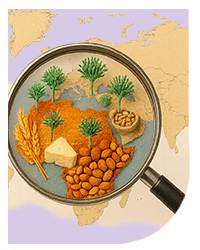
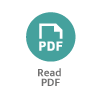

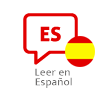
 Micotoxicosis prevention
Micotoxicosis prevention